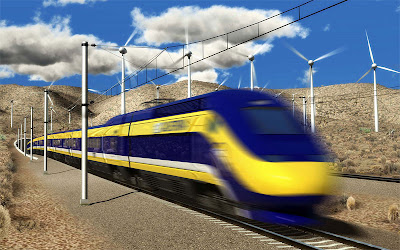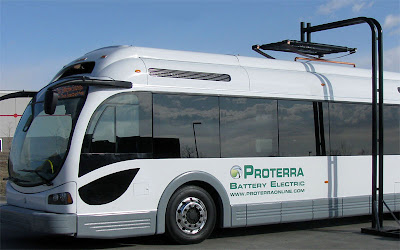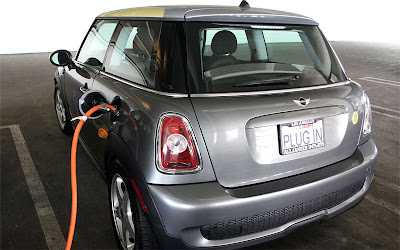
This is a web version of my presentation at Move LA's Transportation Conversation II, an environmental perspective on Los Angeles transportation.
The starting point always is our awful traffic.

Second are the impacts of our oil dependence. The U.S. imports 2/3 of what we use. U.S. production peaked in 1970 - despite all the new production in Alaska - and world production's high point was 2005 (US EIA data).

If one imagined what a divine message might be on the eve of Senate debate about national energy policy, it's hard to imagine a bigger one than the gulf oil catastrophe right now (US Coast Guard photo).

Third is Global Warming, documented here by continuing rise in world temperatures (NASA chart).
(Click any image to enlarge)

Transportation and electricity generation are over half the total greenhouse gas emissions (CARB AB 32 Scoping Plan data).

California's AB 32 goal is to reduce emissions to 1990 levels by 2020 and 80% by 2050 (more on AB 32 Scoping Plan).

The first solution is simple efficiency: if every car got the mileage of today's Prius, the U.S. would use half as much gasoline, one fourth less oil, as vividly illustrated in this cartoon by Steve Nease (used with permission).

The most cost-effective and scalable sources of renewable energy are wind ...

... and solar.

So sustainable transportation must transition to electricity. Measure R funding includes extending the electric Wilshire subway ...
(continue to part 2)

























